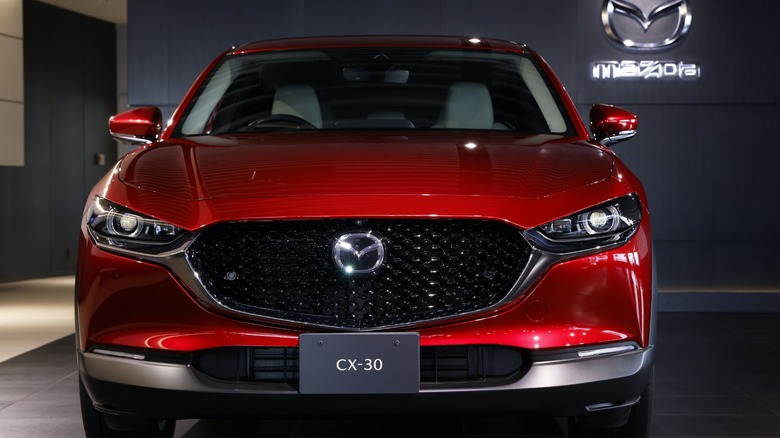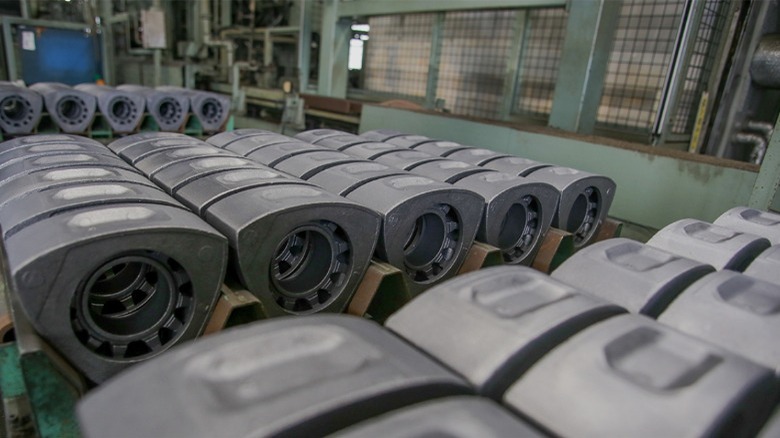Mazda Is Bringing The Rotary Engine Back To The US, But It's Not What You Think
The rotary engine, previously a staple in Mazda's lineup, is an engine design that foregoes the round piston and singular chamber of a regular reciprocal internal combustion engine. Instead, the rotary engine opts for a spinning triangular piston and an elliptical housing with four separate chambers.
According to Mazda, some notable benefits of the rotary engine design is its high power-to-weight ratio, relatively small packaging, and smooth operation. Rotary engines are generally also able to achieve higher RPMs — the piston doesn't have to completely change direction once per combustion cycle, so it can move faster. Unfortunately, many auto makers abandoned the idea of a rotary engine due to some major mechanical setbacks in the early days.
Chattering between the piston and the engine casing, high oil consumption, and poor low-end torque were common reasons for rejection. Mazda stuck with the rotary engine design all the way until the last production run of the RX-8 in 2012, and ended up solving many of the design's biggest issues (via Mazda).
Although nowadays, there has been a shift in the car industry towards electrification, Mazda's rotary engines in particular have earned a bit of a cult following — thanks to the highly popular RX-7 and RX-8. Now, more than 50 years after Mazda started using the rotary engine in the 1960s, Mazda is bringing rotary designs to new frontiers in 2023 through an unexpected way.
Mazda MX-30 rotary hybrid
While the automotive industry as a whole is moving towards electrification, many consumers are hesitant to jump ship from their dependable internal combustion engine platforms to a new technology with unproven range and practicality implications. For those people, hybrid-electric vehicles are potentially an option, and Mazda seems to think hybrid technology will be its key to success as well.
In a 2020 interview with The Detroit Bureau, Mazda North America's president Jeff Guyton, spilled the beans about an upcoming rotary range extender for the company's electric MX-30 crossover SUV. The MX-30 EV launched in 2021 for the U.S. market, but sported middling 100 miles of range, thanks to a rather small 35.5 kWh battery. While Mazda had mentioned the rotary range extender, only recently did reporting by Motor1 suggest that the rotary-powered plug-in hybrid would make an appearance at the 2023 Brussels Motor Show on January 13.
Mazda has been scant on the details given that the big reveal is just around the corner, but reporting by Nikkei Asia suggests that Mazda is hoping to double the range of the existing all-electric CX-30. A parts supplier that works with Mazda in the Hiroshima Prefecture of Japan claims that the plug-in hybrid rotary engines should have a displacement of 3-3.5 liters.
While large displacement is perhaps questionable for a vehicle aiming to be more environmentally friendly, the small packaging and smooth, silent operation of a rotary engine make it a great option for hybrid vehicles.

